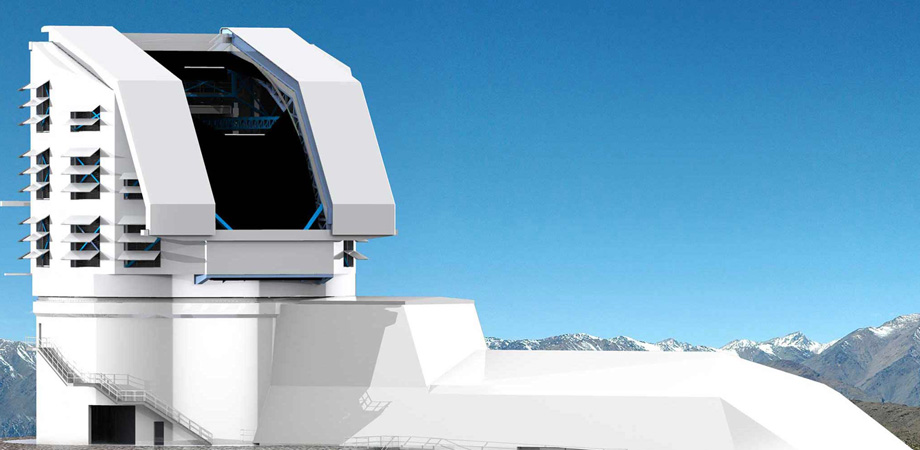A Telescope of Her Own

"There is no problem in science that can be solved by a man that cannot be solved by a woman... Worldwide, half of all brains are in women," wrote astronomer Vera Rubin in her 1996 collection of essays, Bright Galaxies, Dark Matter.
Rubin, who found some of the first evidence of dark matter in the 1970s, died in 2016 at the age of 88. In her honor, the Large Synoptic Survey Telescope (LSST) was recently renamed: the Vera C. Rubin Observatory, is the first national observatory to be named for a female astronomer.
"The Rubin Observatory is expected to significantly advance what we know about dark matter and dark energy," said France Córdova outgoing director of the National Science Foundation (NSF) which supports the newly named observatory. "So the Rubin name will have yet another way to inspire women and men eager to investigate."
"Through her discovery of dark matter," added Rubin Observatory director Steve Kahn, "Vera made one of the most important contributions to science in the past century, not only for astronomy, but also for fundamental physics. When construction is completed in 2022, the Rubin Observatory and the LSST Camera will help build on her pioneering work to dramatically improve our understanding of the Universe on many different scales."

Vera C. Rubin operating the 2.1-meter telescope at Kitt Peak National Observatory. Credit: NOAO/AURA/NSF
Despite the accolades, Rubin didn’t exactly “discover” dark matter, as she herself would often explain. While she discovered evidence for the existence of dark matter, she would say that no one should infer from that discovery that dark matter actually exists. Rubin observed that galaxies rotate so fast that, logically, they should fly apart. She reasoned that they don’t fly apart due to a massive amount of an element that humans can’t yet perceive, but is holding the galaxies together.
"It's like looking at a huge sand dune," explains Priyamvada Natarajan, a theoretical astrophysicist at Yale who often consulted with Rubin. "You know how the sand dune is assembled, you can show how it dissipates in the wind, how it's washed out by water. But you don't know what a grain of sand is made of."
Not a hidden figure
Throughout most of her career, Rubin received significant recognition for her work, including having her name attached to the AAS Vera Rubin Early Career Prize, the Vera Rubin Ridge on the planet Mars, and the asteroid 5726 Rubin. Now, the Vera C. Rubin Observatory on Cerro Pachón joins that list of honors and recognitions.
Rubin was awarded the National Medal of Science in 1993, "for her pioneering research programs in observational cosmology which demonstrated that much of the matter in the universe is dark, and for significant contributions to the realization that the universe is more complex and more mysterious than had been imagined." Although she never received the Nobel Prize for Physics, she was frequently included on official lists as a candidate. Even though Nobels are awarded only to living recipients, every year since Rubin's death, her name has come up during announcements as an example of the committee's abysmal record of recognizing female scientists.

Vera C. Rubin at the Lowell Observatory in Flagstaff, AZ, in 1965. Credit: Carnegie Institution of Washington
In her 2011 autobiography, An Interesting Voyage, Rubin writes about her early struggles to be accepted in the almost completely male world of astronomy: being turned down for graduate studies at Princeton, which didn't accept female graduate students in astronomy at the time; being the first woman allowed into the Palomar Observatory in California, which also meant no women's bathroom; and the unfortunately not-so-unusual experience of having her work ignored or rejected based on her gender.
"I became an astronomer because I could not imagine living on Earth and not trying to understand how the Universe works," she wrote. "My scientific career has revolved around observing the motions of stars within galaxies and the motions of galaxies within the Universe. In 1965, if you were very lucky and interested in using telescopes, you could walk into a research laboratory that was building instruments that reduced exposure times by a factor of 10 and end up making remarkable discoveries. Women generally required more luck and perseverance than men did. It helped to have supportive parents and a supportive husband."
And while Rubin enjoyed the accolades she did receive, she kept a balanced view of what they defined and stood for — and what they didn't. "'Don't let anyone keep you down for silly reasons such as who you are,'" Rebecca Oppenheimer, an astrophysicist at the American Museum of Natural History, recalled being counseled by Dr. Rubin. "'And don't worry about prizes and fame. The real prize is finding something new out there.'"
Related SPIE content:
Andrew Connolly: Surveying the Sky with the LSST: Software as the Instrument of the Next Decade
Complex systems engineering for the Large Synoptic Survey Telescope
Axions: search for dark matter using ultra-intense lasers
Dark matter search by laser spectroscopy
| Enjoy this article? Get similar news in your inbox |
|



